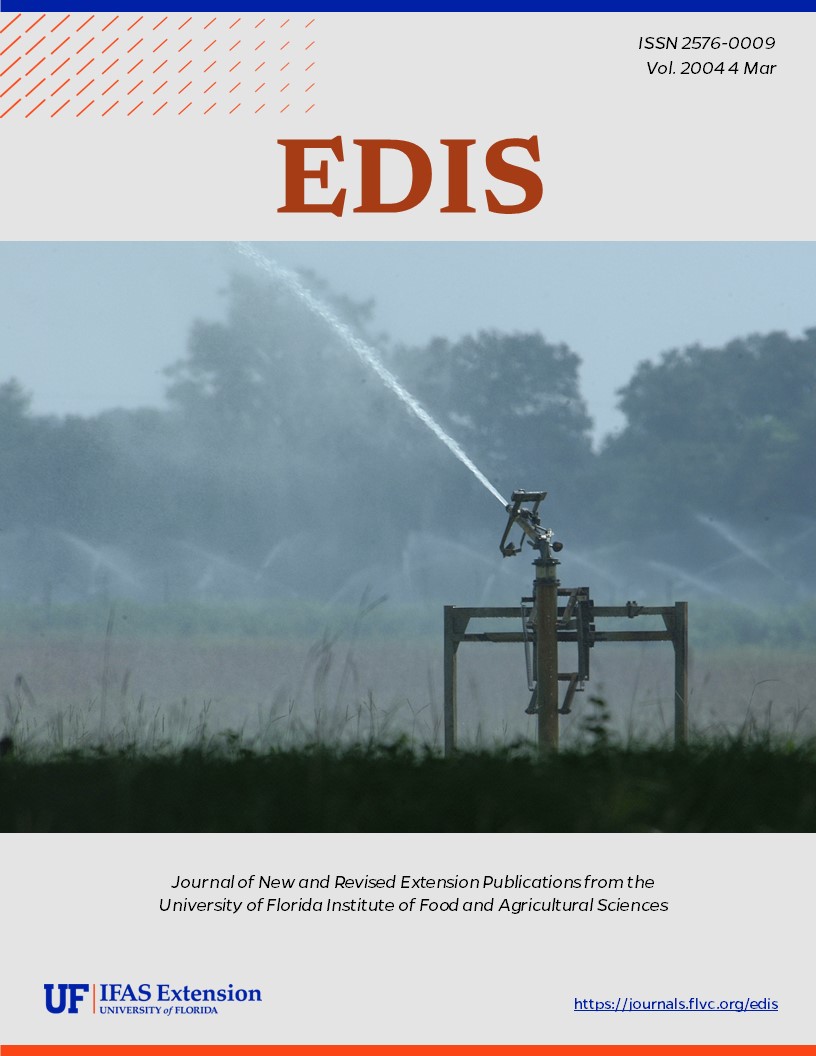Abstract
The grape leaffolder is a common and widely distributed species that is a minor pest of grapes in the United States. In Florida the grape leaffolder has done substantial damage to grape leaves in September and October when growers have discontinued their spray programs after harvest. Excessive defoliation may deplete the food reserves in the vine sufficiently to reduce the size of the next crop. This document is EENY-192 (originally published as DPI Entomology Circular 87), one of a series of Featured Creatures from the Entomology and
Nematology Department, Florida Cooperative Extension Service, Institute of Food and Agricultural Sciences, University of Florida. Published: February 2001.
References
AliNiazee, M. T. 1974. Contribution to the bionomics of the grape leaffolder, Desmia funeralis (Hübner): A laboratory study with field observations. Pan-Pacific Entomol. 50: 269-278.
Jensen, F.L. 1966. Grape leaffolder control with Bacillus thuringiensis. Calif. Agr. 20: 2-3.
Kimball, C.P. 1965. The Lepidoptera of Florida; an annotated checklist. Arthropods of Florida and neighboring land areas Vol. 1. FL Dep. Agric., Div. Plant Industry. 363 p.
McGiffen, K. C. and H. H. Neunzig. 1985. A guide to the identification and biology of insects feeding on muscadine and bunch grapes in North Carolina. NC Agric. Res. Serv. Bull. 470. 93 pp.
Smith, L.M., and E.M. Stafford. 1955. Grape pests in California. CA Agric. Exp. Sta. Circ. 445: 16-19.
Stafford, E.M., and F.L. Jensen. 1957. Grape leaffolder: field tests compared effectiveness of insecticides in control of vineyard pest. Calif. Agr. 11: 4, 8, 10, 15.
Strauss, J.F. 1916. The grape leaf-folder. USDA Bull. 419: 1-14. https://doi.org/10.5962/bhl.title.108688
Unless otherwise specified, articles published in the EDIS journal after January 1, 2024 are licensed under a Creative Commons Attribution-NonCommercial-NoDerivs 4.0 International (CC BY-NC-ND 4.0) license.

